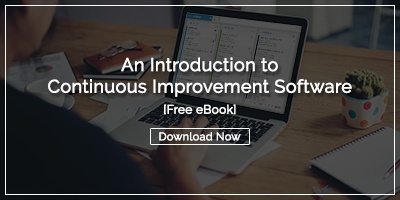 It may seem odd for a company that sells process improvement software to declare that not every company is ready to buy it. We do like partnering with new customers, after all. But the thing is, we only want happy customers. And happy customers are organizations that have successful process improvement software rollouts, good adoption of the solution, and measurable impacts on key business metrics as a result.
It may seem odd for a company that sells process improvement software to declare that not every company is ready to buy it. We do like partnering with new customers, after all. But the thing is, we only want happy customers. And happy customers are organizations that have successful process improvement software rollouts, good adoption of the solution, and measurable impacts on key business metrics as a result.
Even if you choose another solution provider, we think it is important that leaders ask a few difficult questions before going straight to technology to solve their problems.
Obviously, we believe that software is a critical component in any improvement initiative, but it is not the only one.
Here are some questions smart leadership teams ask before starting a process improvement software implementation.
Listen to this Post and Subscribe to the Podcast:
Are we committed to process improvement as a fundamental value of our organization?
Every company will claim to desire improved processes. Who wouldn’t? But many lack the executive commitment that it takes to develop a culture of improvement. The willingness to invest in software to support improvement work is a great sign, but are leaders ready to go all the way? Will ideas for improvement truly be welcome? Will resources be made available to implement improvement? Will experimentation and failure be tolerated? That’s all part of what commitment to improvement looks like. Without that support, implementing process improvement software might not only be a waste of money, but it might even backfire, demoralizing employees when their ideas are rejected or ignored.
Have employees received training on the principles of process improvement?
Whether you are implementing process improvement on its own or doing it within the framework of a methodology like Lean or Six Sigma, employees need training on the basic ideas of the approach. They should clearly understand what is expected of them and what benefits they will see in return. Importantly, they should be introduced to the tools of improvement like PDSA, DMAIC, value stream mapping, the 5 Whys, rapid improvement events, and whatever other tools will be used to make improvement projects successful.
What current process will the new solution replace?
It is ironic that most people don’t think about it this way, but implementing process improvement software is a process improvement. You are likely doing something to manage improvements today even if it is a spreadsheet or a physical suggestion box. Before bringing a new solution on board, it is a good idea to apply some of those tools we mentioned to manage this improvement project. Map out the current process by which change happens. Decide what will be eliminated or enhanced with your new software. This is a great way to develop a list of features that you need to see in the tool that you select.
How will the solution be leveraged at each level of the organization?
The best process improvement software solutions have benefits and use cases for everyone from the CEO to front-line workers. When a deployment fails, it is often because the solution is used only by mid-level managers and it never makes its way to regular use across the board. Of course, this use shouldn’t be forced, it should be driven by the various needs of each level. Executives should think about what kinds of dashboards and reports they would use to make decisions and measure the health of improvement within the organization. Department heads should think about how they would benefit from being able to visualize projects and respond when work hits a roadblock. Supervisors should consider the coaching and motivation advantages that visibility into the engagement of each individual will bring.
How will we handle accountability and recognition?
Companies that gain the most from process improvement software are those that handle employee accountability and recognition very well. They build accountability into the culture by setting individual goals around improvement work that tie back to the organization’s overall objectives. Every employee performance assessment includes a review of what they have done to achieve positive change, what risks they have taken, and how they have collaborated with others. In addition, success is applauded and improvements that lead to better results are broadcast far and wide. These achievements tend to snowball when the results and methods are widely shared.
None of these are simple questions. They each require a thoughtful conversation and the input of key players, but we are certain that it worth the time to discuss each of them. If you can reach consensus on these areas you will put your organization in the best position to profit from the value that process improvement software has to offer.



Add a Comment